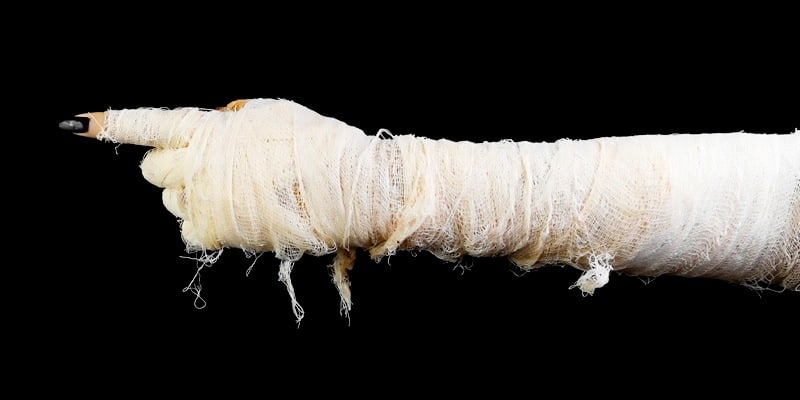Chronic plantar ulcers are a problem that often occurs in leprosy patients with numbness in the legs due to prolonged healing time. Chronic plantar ulcers significantly affect quality of life and even cause serious complications leading to disability and deformity in leprosy patients. One factor that causes longer wound healing in leprosy patients is the lack of growth factors and cytokines due to decreased blood supply. Therefore, the products available in the market do not provide satisfactory results for wound healing. An ingredient that can produce growth factors and cytokines is needed to speed up this healing process.
Plantar ulcers are a severe complication of leprosy and are categorized by WHO (World Health Organization) as a level 2 disability from its visible deformity or damage. The slow healing process in leprosy patients causes this plantar ulcer to become chronic. Chronic plantar ulcers are a result of sensory disturbance, muscle paralysis, autonomic nerve disorders, callus formation, and superinfection. Lack of blood flow due to autonomic nerve disorders in leprosy patients causes longer ulcer healing process. In addition to the prolonged inflammatory conditions, an increase in protease activity also plays a role in causing chronic ulcers.
The wound healing is a process that involves cell coordination, growth factors, cytokines, and extracellular matrix. Lack of growth factors in leprosy patients causes a longer healing process. Therefore, we need something that can produce growth factors to accelerate this treatment. Stem cell secretomes are cytokine products and several growth factors produced by stem cells. These stem secretomes cells can be harvested from stem cells that are grown in a particular medium. There are many uses of stem cells secretomes for regeneration treatment.
Human amniotic membrane stem cells (hAMSCs) have high proliferating ability and immunomodulatory activity. Research shows that fresh and freeze-dries of the human amniotic membrane are effective in helping wound healing. hAMSCs can also produce growth factors and cytokines needed for wound healing. A study was conducted at Dr. Soetomo Surabaya in 11 leprosy patients with chronic plantar ulcers to test the effects of applying hAMSC secretome in gel form for two months. HAMSC secretome gel is produced from hAMSC secretome which is liquid then added with alginate acid sodium from brown algae (Phaeophyceae ) to produce a gel form. Sodium alginate acid was chosen because it is hypoallergic, less likely to cause allergies.
Chronic plantar ulcer subjects were cleaned before the hAMSC secretome gel is applied. It aims to eliminate one source of infection that will inhibit the wound healing process. The application of this gel is made every three days for two months. After applying the gel, the wound will be covered with a transparent layer and given a bandage. During this study, patients were not allowed to stand or walk for too long and were not allowed to carry something heavy.
The results of applying this gel for two months were excellent. Eight patients (72.7%) had ulcers healed completely, two patients (18.2%) only partially cured, and one patient still had their ulcers. From the 11 subjects of this study, no ulcers got worse. The subjects also did not complain about side effects, and there were no complications from the application of hAMSC secretome gel. The application of hAMSC secretome gel might serve to improve the microenvironment of the wound, and it stimulates faster healing process. Cytokines in hAMSC secretome will play a role in the inflammatory phase of the wound. Proinflammatory cytokines will eliminate infection in wounds, and anti-inflammatory cytokines will reduce the inflammatory process. Furthermore, produced growth factor will play a role in the proliferation phase of the wound to stimulate the formation of new blood vessels/angiogenesis and stimulate cell proliferation for the process of epithelialization.
It can be concluded that the secretome hAMSC gel can be a new therapy that is beneficial for treating chronic plantar ulcers in leprosy patients because hAMSC secretome produces growth factors and cytokines that play an essential role in wound healing.
Author: Prof. Dr. dr. Cita Rosita Sigit Prakoeswa, Sp.KK(K), FINS-DV, FAADV
Details of research available at:
https://www.ncbi.nlm.nih.gov/pmc/articles/PMC6537685/
Effective Healing of Leprosy Chronic Plantar Ulcers by Application of Human Amniotic Membrane Stem Cell Secretome Gel
FR Natallya, N Herwanto, CRS Prakoeswa, DM Indramaya, FA Rantam
Department of Dermatology and Venereology, Faculty of Medicine, Universitas Airlangga / Dr. Soetomo General Hospital, Surabaya, IndonesiaDOI: 10.4103/ijd.IJD_6_17





